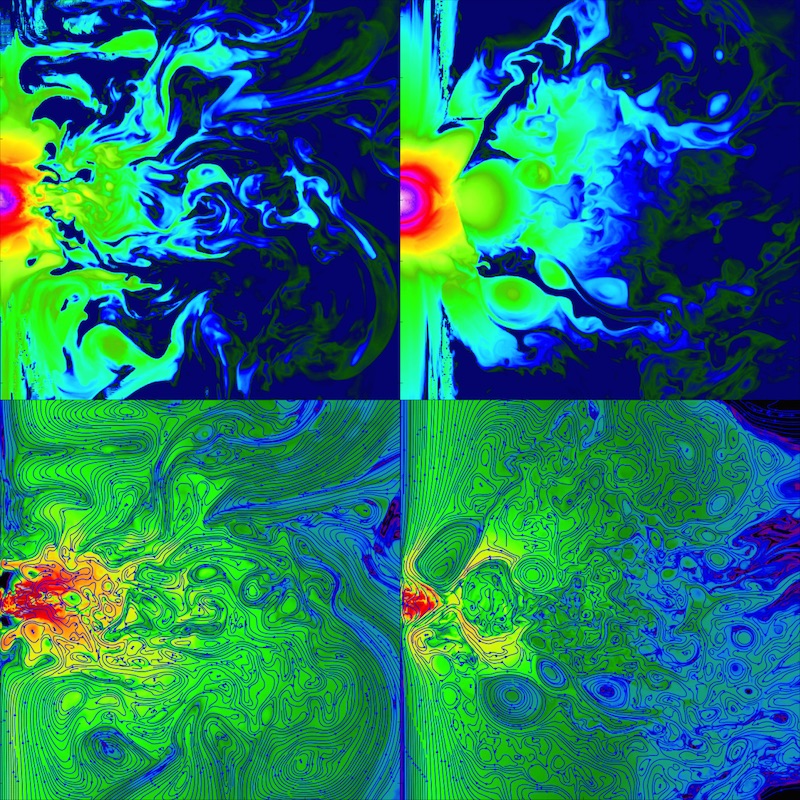Cosmic Ray-Dominated Circumgalactic Medium
We carry out the first model of the circumgalactic medium (CGM) dominated by cosmic rays (CRs) based on FIRE-2 simulations. In Milky Way-mass halos, CR pressure could be orders of magnitude greater than gas thermal pressure, and plays a major role in balancing gravity. From this new balance comes an equilibrium CGM density profile which is independent of gas temperature. As a consequence, the CGM becomes diffuse and primarily cool at a few 104 K, and the volume-filling cool phase is out of local thermal pressure balance, but in total pressure balance with CR pressure accounted. The CGM thus becomes predominantly photo-ionized, with an O VI column density > 1014.5 cm−2 over a characteristic length of ~150 kpc. (Ji et al., 2020a, Ji et al., 2020b)
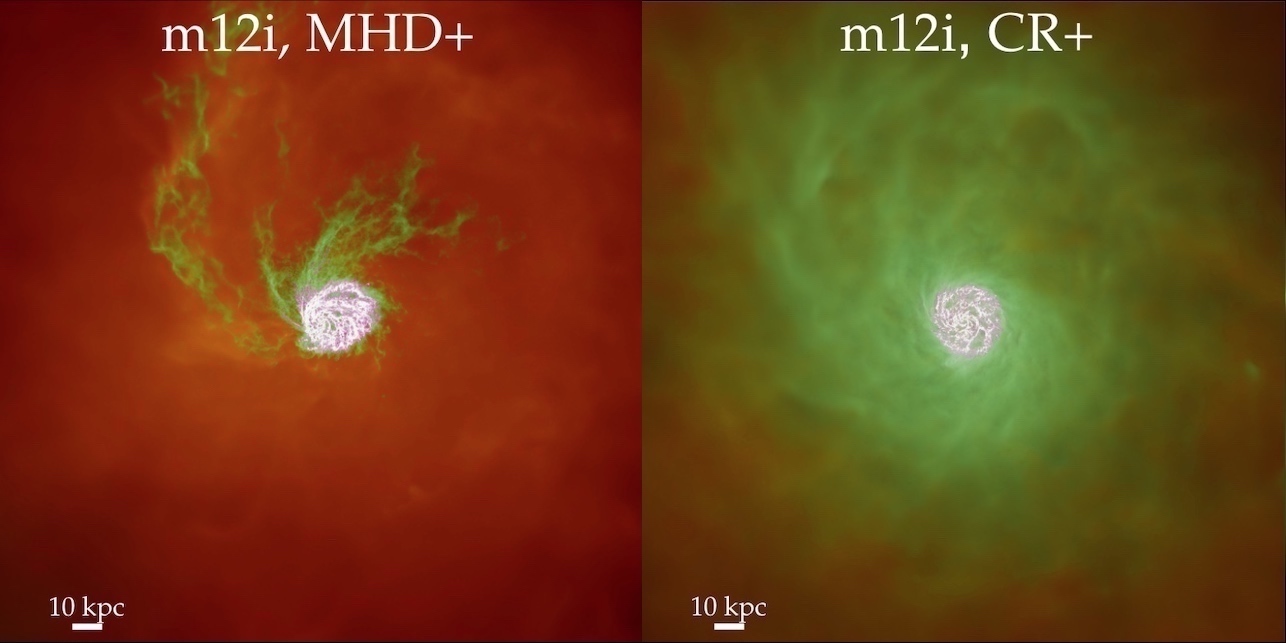
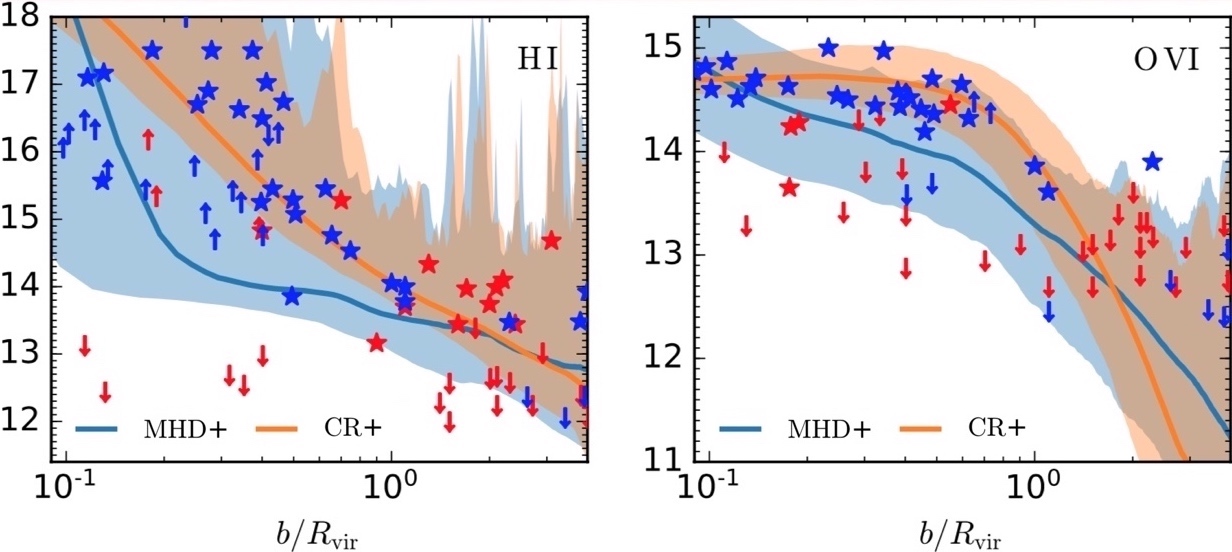
Radiative Turbulent Mixing Layers
We confront analytic theories of turbulent mixing layers (TMLs) against 3-D MHD simulations with radiative cooling, non-equilibrium ionization and photo-ionization. We find that it is radiative cooling rather than Kelvin-Helmholtz instability that appears paramount in determining the saturated state of TMLs, with the TML width scaling as rather than . The evolutions of C IV, O VI, Si IV column densities from TMLs are predicted under various conditions. (Ji et al., 2019)
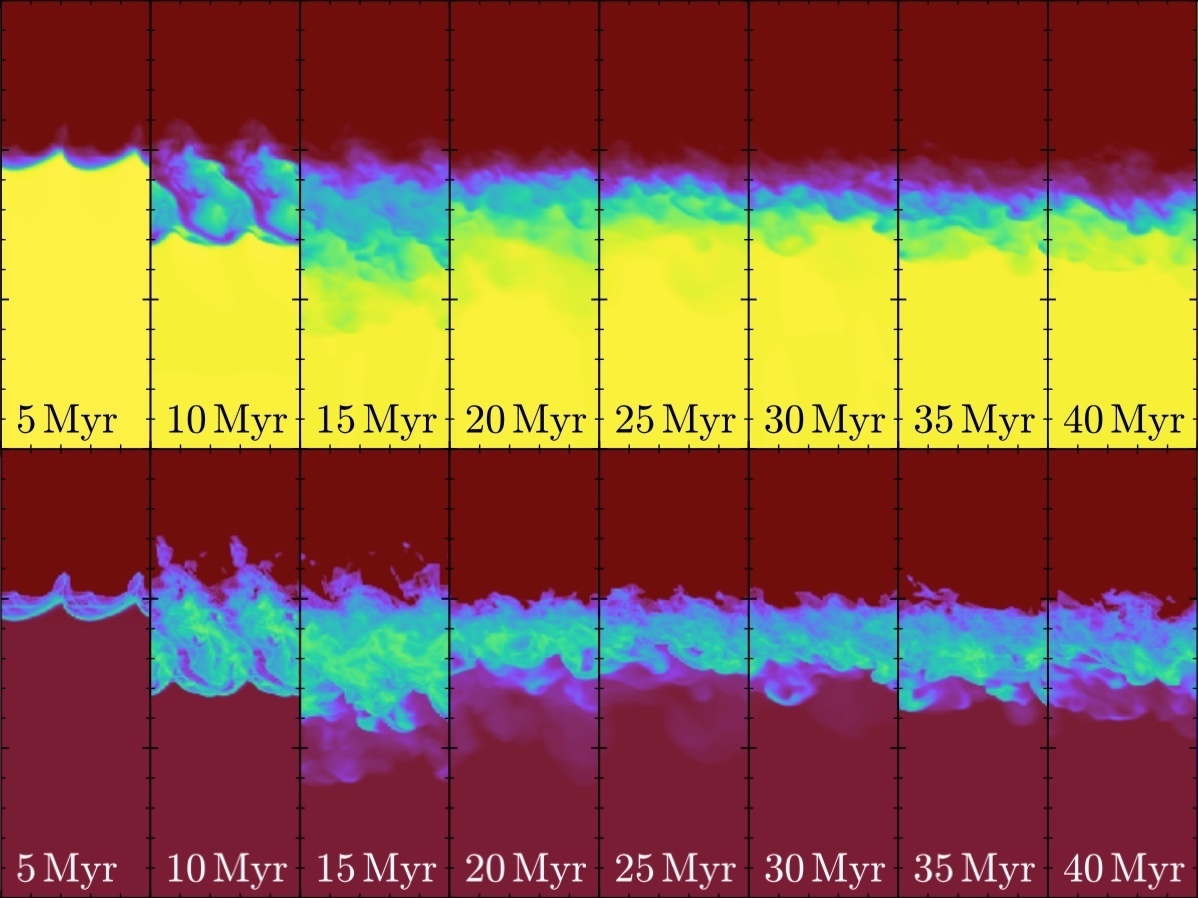
Impact of Magnetic Field on Thermal Instability
Magnetic fields can significantly enhance thermal instability (up to one order of magnitude) in a gravitationally stratified medium, by suppressing internal gravity waves and supporting cold filaments against gravity. The physics involved here can help us to understand the formation of cool gas in circumgalactic medium, intracluster medium, and other circumstances involved with thermally unstable plasmas. (Ji et al., 2018)
Efficiency of Magnetic Field Amplification at Shocks
We investigate the interaction between shocks and magnetohydrodynamic turbulence in astrophysical contexts (supernova remnants and galaxy cluster outskirts), during which the shock propagating through turbulence amplifies the magnetic fields and changes the field topology. We find that in supernova remnants, field amplification by strong shocks is stretching dominated, producing radially biased field in downstream, while in clusters is weaker and mostly compressional, producing tangential fields, which is consistent with observations. (Ji et al., 2016)
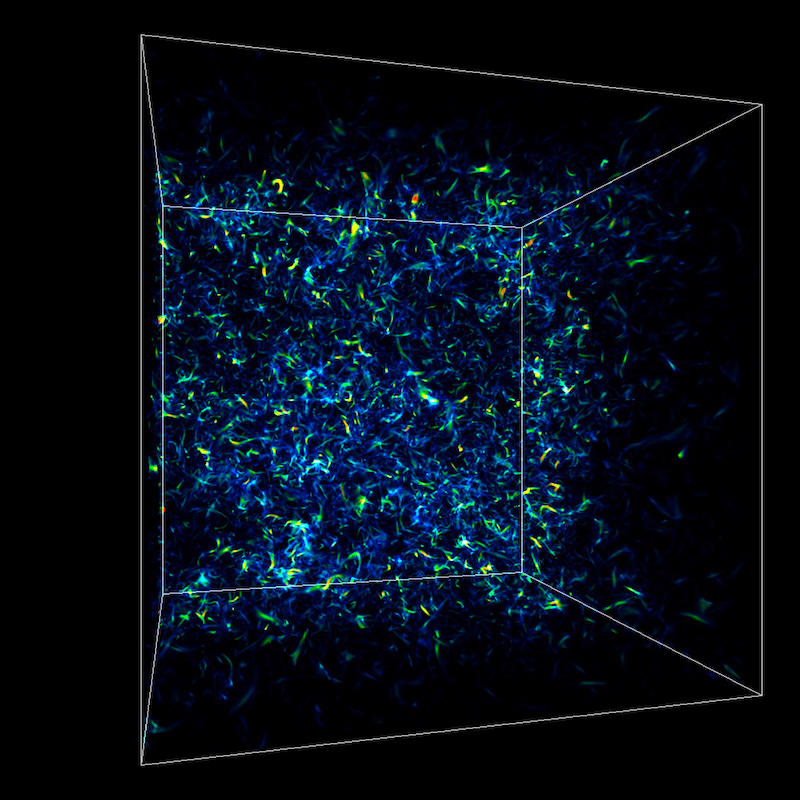
Post-merger Magnetized Evolution of White Dwarf Binaries
We study the magnetohydrodynamic evolution of white dwarf mergers, finding that an initially weak magnetic field is highly amplified by magnetorotational instability, and forms a high-field magnetic white dwarf with a field strength of 1010 Gauss. This is the first work to explore in detail the possible influence of magnetic field on the double-degenerate scenario of Type Ia supernovae. (Ji et al., 2013)
